Copenhagen vs Amsterdam
In mid-late March, we went on a week-long trip to visit both Amsterdam and Copenhagen, spending almost two days in Amsterdam and three in Copenhagen. In our German class the following week, we were asked which one we liked more, and the overwhelming majority of the class answered Copenhagen, which I found to be strange, but I started to wonder why this was the case. I spent time thinking about the differences between the cities, and when visiting Amsterdam more recently with friends who had come to visit, I paid more attention in my travels around the city, noting the things that I liked more or less than Copenhagen. These cities varied significantly in terms of their architecture, infrastructure, and culture, making it interesting to compare them in hindsight. I found parts of both cities to be very beautiful, but the experiences I had in both were completely different. I’d like to spend some time comparing these experiences that I had, and try my best to paint a picture of what these places were like.
To start off, I’d like to compare the general feel, size, and architecture of both cities. Amsterdam is significantly more densely packed than Copenhagen, with smaller streets and houses, as well as canals that were everywhere you walked. Because of this crowded nature, it was difficult for traffic to move around; there were many places that big vans simply couldn’t fit, and not many inhabitants using cars as their method of transportation. Shipment could be done on canals, and when visiting later with my friends, we went on a canal tour that was able to highlight all of the historic parts of the city, something that I wish we had done as a class when we were there to visit. As many people might know, Amsterdam is known for its bikes, with there being significantly more bikes than people in the city. At the busiest hours, it is difficult to get around without almost being hit by a biker when crossing the street. Amsterdam felt like it had a “fend for yourself” traffic system, where walking pedestrians, bikers, and motorcyclists going down any alleyway or sidewalk that they could fit, and while there was specific bike lanes, often times the sidewalks were too small for everyone to fit on, meaning you had to walk in the street. Additionally, almost all of the buildings we saw seemed to be very old, with few modern buildings within the city. This is probably because of the lack of space to build in this crowded city, but I thought most of these old buildings were extremely pretty, especially the Central Station, which I felt encapsulates the beautiful architecture and style of the city. Everywhere you would go you would find small windy roads, with old, slanted houses towering over you. It felt like a city from the 1700s or 1800s that modern people had still adapted to live in.
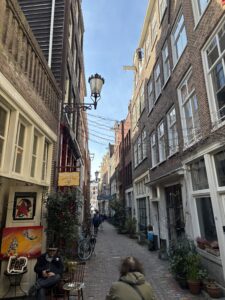
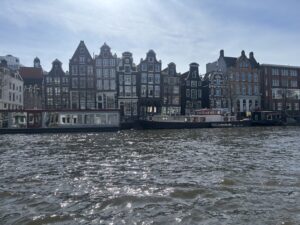
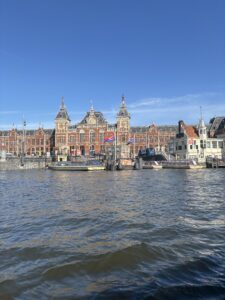

On the other hand, Copenhagen was a much more spread out and newer city. Near the area we stayed was the older part of the city, with the Nyhavn colorful houses on the water that Copenhagen is famous for. That older area with the canal resembled Amsterdam in a way, but the canals were much more tame in comparison to Amsterdam, since they didn’t really stretch all throughout the city in the same way. Also this area with older architecture that I love so much was fairly limited within the scope of the city, and we did many tours on the outskirts where there were new areas being developed. Copenhagen has had many people moving in during recent times, so a large part of the city is more modern than Amsterdam, but I found these modern buildings to be a lot less interesting and took away from the character of the city. There were a lot of areas where it just felt like “a city” instead of having a unique feel of Copenhagen. Bikes were still an incredibly common way of transportation for the residents, but cars were much more common and it’s likely significantly easier to get around Copenhagen than Amsterdam by driving. Additionally, because Copenhagen has been a recently developing and thriving city, everything was MUCH more expensive than the Netherlands or Germany, and it felt like I had to take out a loan to try to go out for dinner. Because of this, I ate mostly at 7/11, which is actually really good in comparison to the US, but still not as great as food in other places, such as Amsterdam or Germany when comparing the price. It also felt like there was a lot more business going on in Copenhagen than Amsterdam, and you would see people walking around the city in suits very often, which is probably why the city felt more modern and expensive. One big mark that Copenhagen gets over Amsterdam is the public transit: the Copenhagen metro system was incredible; below the ground there would be several stories of subway trains running every two minutes, alternating between different lines. These were always on time, and if you missed one train you barely had to wait to catch the next. Amsterdam, since it was built on canals, didn’t have a subway system, and relied mostly on trams for public transit, which were much less frequent and slower than the Copenhagen metro system. Christiana was one of the more interesting places in Copenhagen; it’s a self governing section of the city founded in the 70s that has much more of a “hippie” vibe than the rest of the city. We didn’t spend much time there, but it definitely stood out.
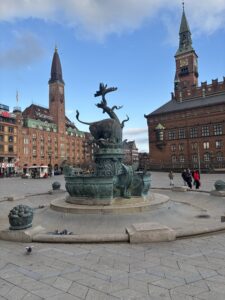
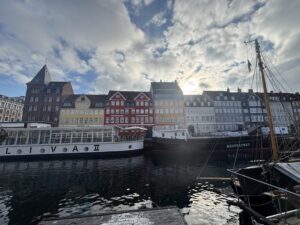

Overall, while I was able to appreciate both places, I thought Amsterdam was a prettier city with a much more unique vibe to it. Copenhagen did have some very pretty areas near the center, but I thought the rest of the city was very boring, with not much to offer in terms of cuisine, culture, or experiences. Copenhagen does seem like a better place to live since it was more spread out, had better transportation, and I would probably be making more money so things there are more affordable, but strictly from a tourist point of view I think Amsterdam was a better place to visit, and has its own unique feel of it that you can’t get anywhere else.
-Seamus Barnes
“Welcome to the Copenhagen Metro.” (n.d.). https://m.dk/en/
The history of the Amsterdam canals | Amsterdam.info. (n.d.). https://www.amsterdam.info/canals/history/
